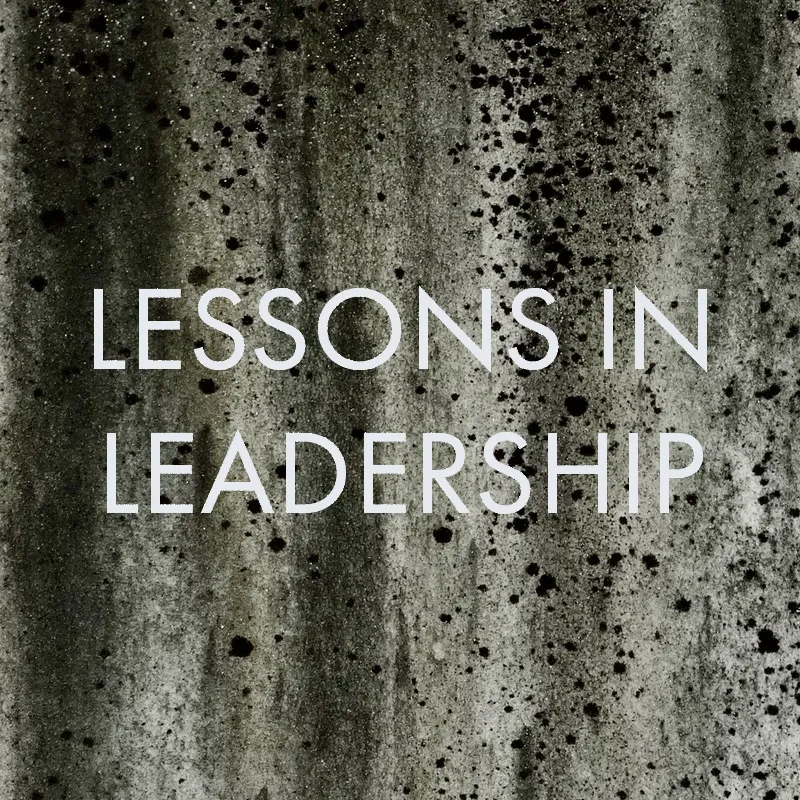
Communication in the AI Age
Angela Watson
President and CEO of Shepley Bulfinch
May 1, 2024
Angela Watson examines artificial intelligence in the context of communication — and shares an experiment.
AI’s Content and Communication Value
Looking at news feeds today,1 it is almost impossible to escape yet another article, press release or announcement about artificial intelligence (AI). There are myriad opinions about what AI can and can’t do, if it will destroy or empower humanity and how it may change our future — for better or worse. Meanwhile, many of us are experimenting with AI, curious about how it may change our work, our roles and responsibilities, and how we connect with the world and each other.
When discussing the impact AI may have on the design professions, particularly architecture, I often hear people compare AI to other technological advances, such as the internet or building information modeling (BIM), describing AI as a tool that will overcome and replace rote tasks we don’t want to take on. But is that all? Is there something more fundamental at work? How does it compare to past tools?
One Firm’s Communication History
I have been thinking about AI and related issues for some time. In 2022, I was asked to give a presentation at AIA Arizona and decided to explore the history of our 150-year-old firm. I described our transformation from our founding by Henry Hobson Richardson to a women-led, hybrid workplace that embraces diversity. I spent time in our archives looking at linen drawings and 100-year-old models and walked past H.H. Richardson’s oversized chair and library collection countless times but decided to focus on the evolution of tools, communication and the workplace. While crafting this story I was struck by two things.
First, it became clear from our archival photos that the “typical” architect’s office had not changed much as of 2020. Open workstations, with spaces to pin up drawings were ubiquitous, with T-squares giving way to Mayline parallel bars and desktop computers, followed by laptops. But the open studio setting remained. All that changed in 2020, when a global pandemic forced us to leave the studio and rely on a new set of communication and collaboration tools. Since then, the definition of the workplace has evolved, including remote and in-person work scenarios that remain hotly debated.
Second, OpenAI released ChatGPT and DALL-E, drastically changing the dialog and awareness of AI and suggesting fundamental questions about the future of design. Charting these findings, the increasing rate of change in tools, the change in workplaces and the addition of AI reveals a steeply rising line. It suggests a radical shift in our work process and environment after the relative stability of the last 150 years.
Curious to look to the future and understand the implications, I tried to compare tools and processes with my experiences experimenting with AI. In particular, I was interested in understanding how using these tools would be different in the future, to understand how we might communicate differently with these new tools, machines and intelligences.

Image courtesy Shepley Bulfinch archives

Image courtesy Pablo Herraiz Garcia de Guadiana
How Is AI Different?
To investigate further, I went back to the Shepley Bulfinch case study. Over the 150-year firm arc, communication began with handwritten notes, letters and memos, hand-lettered drawings and in-person communication. Over the years this changed to include the telephone, typewriters and carbon copies, mimeographs, faxes and copy machines. In 1980, four desks shared one telephone. Since then, new technologies have accelerated information flow, with email making the fax machine obsolete. Even before the pandemic, we added social media and collaboration platforms such as Slack and Teams to our tool set. It’s notable that the speed and quantity of information flow has accelerated dramatically, making it difficult, if not impossible, to keep up, especially if one considers our input method of typing individual letters and numbers, punctuation one at a time (as I am doing now). The act of writing this makes me realize exactly how arcane the process is. Other tools we continue to use for presentation and computation are similar in structure to their predecessors and equally arcane.
Similarly, the tools we used in design and architecture began with T-squares, pencils, paper, ink on linen and models. Efficiency increased through blueprints and calculators, and as we entered the digital age, tools became more advanced and efficient. We added computer-aided design (CAD), which was just drawing lines electronically as vectors, meaning two points and a line between them. But those lines were still exactly, and only, what we told them to be. They were like digital pencils with the added advantage of being able to be duplicated without being erased and redrawn by hand. We have now expanded to even more complex tools like BIM, virtual-reality design tools, parametric models and energy modeling tools. While we can process and convey more information on shared digital platforms, we are still controlling every aspect of input and output. More importantly, the output is predictable and repeatable. We input data and receive a certain output. And if we input the same data again, we get the same output as before.
The same approach is true for most other tools we use, including Excel, PowerPoint and data visualization. We control every aspect of the process.
Embracing AI, Virtual Work and Communication Today — An Experiment
So how is AI different? Is it? The first time I experienced ChatGPT, I was about to start working on a report and decided to try an experiment. I quickly typed five brief bullets and asked ChatGPT to write a seven-to-eight-paragraph president’s report on my phone. I was stunned to find it generated a fairly comprehensive narrative of what I had wanted to say. The core statements were there with a nice amount of context. I now realize that this is probably because most board reports sound predictably similar. Based on those available on the internet, ChatGPT was able to generate something that sounded very plausible. My questions now are: Do we all sound the same, and is that necessarily a bad thing? Are we creating our own echo chamber, or are we already in it? Are there ways to be more targeted and creative about what we want to convey?

Image courtesy Shepley Bulfinch archives
Now, AI-enabled tools are everywhere. ChatGPT has evolved, allowing us to save communication and writing styles in our settings and to access more recent data. In the Microsoft Office suite, Copilot has entered the scene, giving us access to our own data and files. It works directly inside Microsoft Office applications, promising to help us write reports, summarize emails, compose messages and interrogate data.
One recent experiment proved quite successful. I was curious how well Copilot would fare in creating a vision statement. I pointed to three internal documents by starting to type file names and waiting for Copilot to find these files on the server. Based on these three — our shared purpose statement, our strategic plan and a stakeholder analysis — I asked Copilot to generate a short vision statement. The result was a very nice document with two paragraphs and a few bullets that nicely summarized all we had said in those documents. The good news: It sounded good and validated our thinking. The bad news: It didn’t stand out. It was easy to read and said all the right things but didn’t provoke thinking or emotional reaction.
I decided to take a different approach. This time I included the same documents but asked Copilot to use a specific, one-sentence statement and work the information in the other documents around it. This yielded much better results with two distinct paragraphs. The first outlined the memorable statement, the second added more detail. I chose only the first paragraph, which also resonated with some of our stakeholders.
My questions now are:
• Do we all sound the same, and is that necessarily a bad thing?
• Are we creating our own echo chamber, or are we already in it?
• Are there ways to be more targeted and creative about what we want to convey?
By now you may be wondering if I wrote this article with Copilot. Not quite. I did, however, use this opportunity as an experiment. Testing Copilot’s limits, I started by asking for an 1,800-word article based on a series of bullets that were more stream-of-consciousness than an actual outline. Unfortunately, the resulting text turned out to be a somewhat self-promoting self-description of AI.
Working from a different angle I tried another approach. I am a slow typist, having never learned to type without closely observing my hands on the keyboard. I had tried dictation and found it incredibly frustrating, similar to typing. While faster, in using speech-to-text dictation, one still has to articulate commas, periods and carriage returns — more holdovers from a bygone era. I thought this might be a good challenge for Copilot. Via the dictation tool, I narrated content for a few paragraphs, but did not add punctuation. This resulted in raw data and semi-intelligible writing with occasional half sentences, misinterpreted and misspelled words, and no punctuation to speak of. I was hopeful Copilot would be able to turn my direct verbal transcript into something sensible and maybe even compelling. I was right, at least about the sensible part. Parts and pieces of this experiment are incorporated here.
ANALYSIS
So how did my experiment go? What did it tell me? AI “behaves” differently from tools that are digital extensions of our pencils, slide rules or paint brushes. Results vary depending on how the prompts are written and are often different even if the prompts are the same. AI makes up things when it does not have clear answers. AI is not predictable. I might go as far as saying AI “behaves” more like a human colleague than a machine. Its response to our request or prompt depends on many factors including context and training. Working with AI is surprisingly similar to communicating with humans. We need to understand their motivation, background, beliefs — maybe the equivalent to AI training. We may actually have to develop something like AI empathy to work well with it. AI has the potential to help us do better work, achieve better outcomes, do both faster and process much more information than before, but all of it depends on our ability to ask the right questions.
Working with AI-enabled tools effectively requires better communication skills. Instead of directing AI to complete very specific tasks with predictable outcomes as we are used to doing with other tools, like typing individual letters on a keyboard, creating Excel formulas or modeling building components, we have to describe an outcome. This includes describing the intended audience, outlining a goal, detailing intent, providing relevant information and defining quantity and scope for the desired product or outcome.
This should not be surprising. Effective communicators already do this. It is considered good management that empowers people to work at their highest level with the most agency. As we learn to work with AI and it requires us to be better at articulating intent, will it train us to be better communicators, or will we be delegating this to prompt engineers? My hope is that we will discover the answers to this and other questions by experimenting and learning. There is no time to waste. While we humans are catching up, AI is evolving, offering opportunities to tackle bigger problems faster and more effectively.
I might go as far as saying AI “behaves” more like a human colleague than a machine. Its response to our request or prompt depends on many factors including context and training … all of it depends on our ability to ask the right questions.
Impacts and Actions, Individually and on the Larger Scale
How will AI’s emergence impact us and our businesses in the future? One thing seems certain: the speed at which these tools are evolving and being adopted. Since the first time I tried ChatGPT, countless AI tools have emerged. They are now appearing in image software and generating video footage that looks realistic. Smartphones integrate AI in their operating systems, and software that we used to call word processing now has Copilot as a virtual helper and partner (or a Copilot that significantly changes the way we create).
What can we do to prepare ourselves for a future that includes AI, when new apps appear daily and evolve at breathtaking speeds? We don’t know what these tools will look like, but we do know they will demand that we adapt, communicate more effectively and embrace change. We will need to be more agile, question our assumptions and become lifelong learners.
My current reading list includes Sapiens, a book about the evolution of humans by Yuval Noah Harari. In it, the author describes a key milestone in human development as the ability to manage, share and convey larger and larger quantities of information. He points out that this is how writing likely evolved and allowed humans to scale their influence by extending their reach of collaboration and motivation.
Is this a similar inflection point, where we, with AI’s help, will be able to increase our abilities to process and manage information, motivate and empower larger groups of humans?
And when we do, what will we do with this power?
Footnotes:
1 Editor’s note: We used to do this by reading hard-copy printed documents called newspapers. They
were delivered to our front doors, driveways and steps via bicycle or automobile, or acquired at newsstands in cities. Before that, we got
our news about the world by viewing weekly newsreels at Saturday matinee movies in theaters.
Angela Watson, FAIA, is the president and CEO of Shepley Bulfinch, a 150-year-old national architecture and design firm with studios across the United States. She is the chair of the board and a design leader at the firm. She leads with a vision of collaboration, creativity and design excellence and values communication as the key to understanding the needs of clients, communities and stakeholders. Angela’s post-occupancy research demonstrates her dedication to creating spaces that positively impact people and their communities. She connects teaching and practice to develop innovative solutions that are adaptable to a changing world.
Born in Germany, she studied at Universität Karlsruhe and earned an MArch from MIT, where she taught design in subsequent years. She is a senior fellow of the Design Futures Council.




